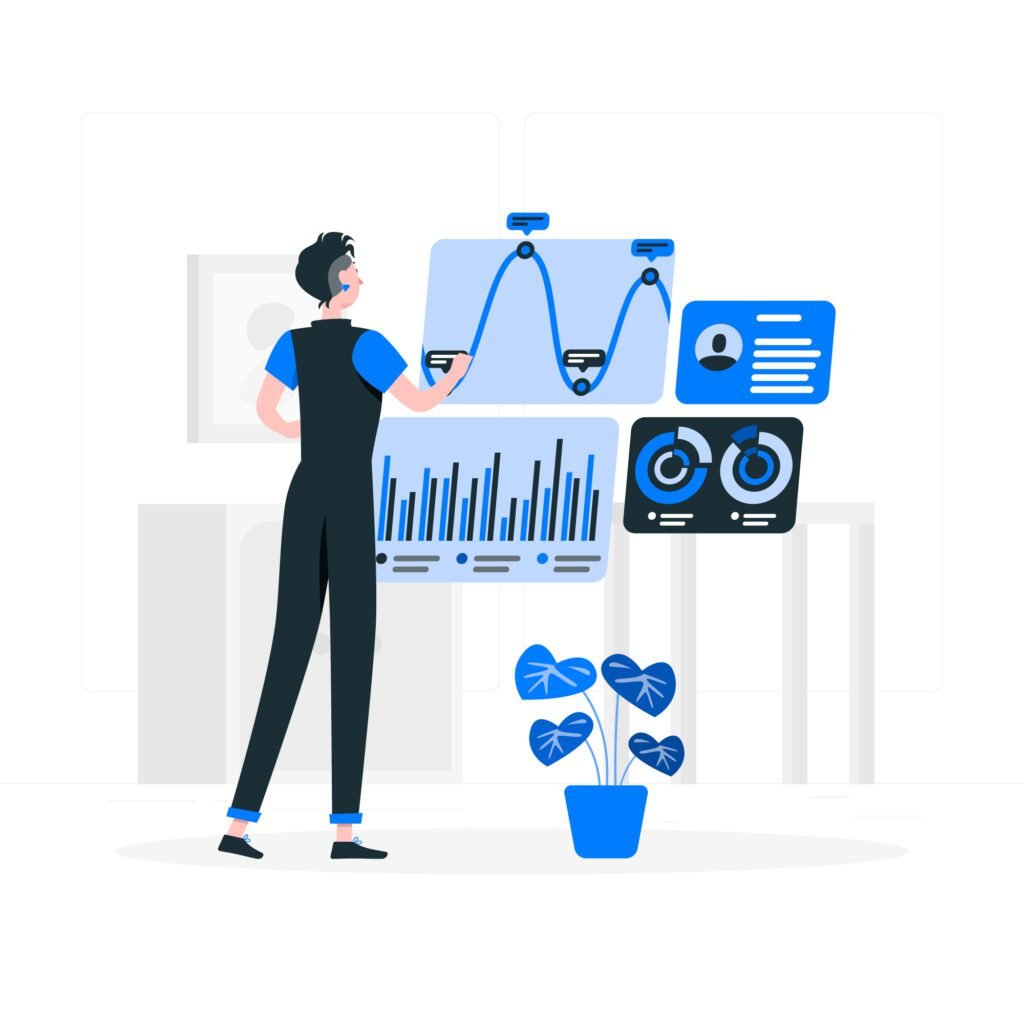How AI and Analytics Are Crafting Next-Generation Games.
In the ever-evolving landscape of the gaming industry, where innovation and player engagement are paramount, developers are turning to advanced technologies like AI and analytics to create more immersive, personalized, and exciting gaming experiences. From generative AI to predictive analytics, these tools are helping developers better understand player behavior, optimize gameplay, and create new content that keeps gamers coming back for more.

AI Role in Crafting Next-Generation Games
Artificial Intelligence has rapidly become an integral part of game development, revolutionizing the way games are created, played, and enjoyed. Let’s explore some key applications and benefits of AI in the gaming world:
Procedural Content Generation: AI algorithms can generate vast, dynamically changing game worlds and content. This not only reduces the burden on developers but also leads to more varied and exciting gaming experiences. Games like “No Man’s Sky” demonstrate the potential of procedural generation in creating vast, immersive game environments.
Quality Assurance: AI-driven testing and debugging tools are capable of identifying bugs, glitches, and inconsistencies much faster and more efficiently than human testers. This results in higher-quality games that are free from many of the common issues players might encounter.
Data-Driven Marketing: AI assists in understanding player preferences and behaviors, allowing developers and publishers to tailor their marketing strategies to specific audiences. This targeted approach helps maximize the impact of advertising campaigns and reach the right players with the right content.
Cheating Prevention: AI-powered anti-cheat systems are essential for maintaining a fair and enjoyable gaming environment. By detecting and preventing cheating, AI helps ensure a level playing field for all players, promoting a more positive gaming experience.

Application of Predictive Analytics
In addition to AI, predictive analytics plays a crucial role in shaping the future of gaming. It involves the analysis of vast amounts of player data to predict and optimize various aspects of games. Here are some key applications:
Player Behavior Analysis: Predictive analytics allows developers to gain insights into how players interact with their games. This information can inform game design, helping create more engaging and immersive experiences.
Dynamic Difficulty Adjustments: Games can adapt to a player’s skill level in real-time, providing a more balanced and enjoyable experience for both novice and experienced gamers.
Churn Prediction and Prevention: By identifying players at risk of leaving a game, developers can take proactive measures to retain them. This might include offering personalized incentives, content, or challenges.
Game Balancing: Predictive analytics helps fine-tune game balance by identifying overpowered or underused elements. This ensures that games remain fair and competitive, keeping players engaged.
Fraud Detection and Prevention: Protecting in-game economies from fraudulent activities is crucial. Predictive analytics can detect abnormal behavior patterns and prevent cheating and fraud.
Personalized Content Recommendation: Analyzing player data enables games to suggest personalized content, such as in-game items, challenges, or storylines, tailored to individual preferences.

Impact of Predictive Analytics and AI
The integration of AI and predictive analytics into game development has a profound impact on the industry:
Enhanced Player Experience and Engagement: With AI-driven personalization and dynamic gameplay adjustments, players are more engaged and satisfied. They receive content and challenges that align with their interests and skill levels.
Creation of Personalized Content and Recommendations: AI and predictive analytics make it possible to offer players content that resonates with their preferences, increasing player retention and satisfaction.
Optimized In-Game Mechanics and Balance: By analyzing player data, games can be fine-tuned to provide a balanced and enjoyable experience for all, from beginners to experts.
Reduced Churn and Maximized Player Retention: With predictive analytics, developers can identify and address issues that may lead to player attrition, ultimately increasing player retention and revenue.
In summary, the infusion of AI and predictive analytics is transforming the gaming industry, enabling developers to create more exciting, immersive, and personalized gaming experiences. As these technologies continue to advance, gamers can look forward to a future filled with even more innovative and engaging games.
Please Contact Us for more detailed insights and learn how can we help you.









